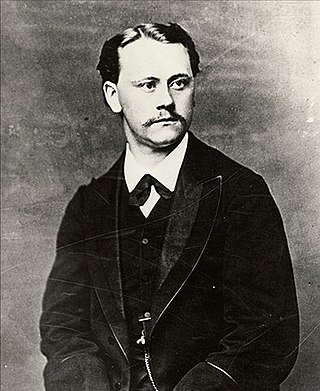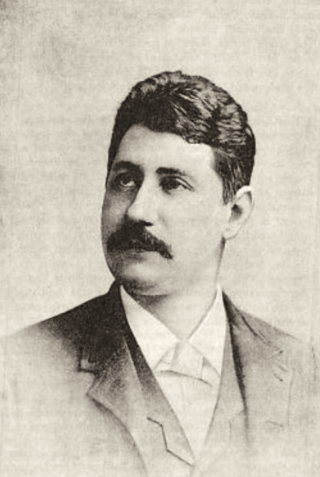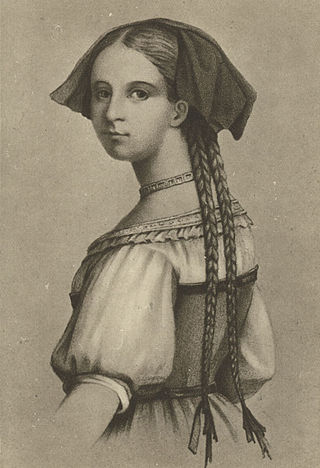| The Very Best Of | ||||
|---|---|---|---|---|
 | ||||
| Greatest hits album by | ||||
| Released | 23 September 2003 | |||
| Label | EMI | |||
| Kiri Te Kanawa chronology | ||||
| ||||
The Very Best Of is a greatest hits album released by New Zealand opera diva, Kiri Te Kanawa in 2003.
| The Very Best Of | ||||
|---|---|---|---|---|
 | ||||
| Greatest hits album by | ||||
| Released | 23 September 2003 | |||
| Label | EMI | |||
| Kiri Te Kanawa chronology | ||||
| ||||
The Very Best Of is a greatest hits album released by New Zealand opera diva, Kiri Te Kanawa in 2003.

Die Fledermaus is an operetta composed by Johann Strauss II to a German libretto by Karl Haffner and Richard Genée, which premiered in 1874.

The Andrews Sisters were an American close harmony singing group of the swing and boogie-woogie eras. The group consisted of three sisters: contralto LaVerne Sophia Andrews (1911–1967), soprano Maxene Anglyn Andrews (1916–1995), and mezzo-soprano Patricia Marie Andrews (1918–2013). The sisters have sold an estimated 80 million records. Their 1941 hit "Boogie Woogie Bugle Boy" can be considered an early example of jump blues. Other songs closely associated with the Andrews Sisters include their first major hit, "Bei Mir Bist Du Schön " (1937), "Beer Barrel Polka " (1939), "Beat Me Daddy, Eight to the Bar" (1940), "Don't Sit Under the Apple Tree " (1942), and "Rum and Coca-Cola" (1945), which helped introduce American audiences to calypso.

"Barbara Allen" is a traditional folk song that is popular throughout the English-speaking world and beyond. It tells of how the eponymous character denies a dying man's love, then dies of grief soon after his untimely death.
"Pōkarekare Ana" is a traditional New Zealand love song, probably communally composed about the time World War I began in 1914. The song is written in Māori and has been translated into English. It enjoys widespread popularity in New Zealand as well as some popularity in other countries.

Eugène Marie Henri Fouques Duparc was a French composer of the late Romantic period.
The Bonnie Lass o' Fyvie is a Scottish folk song about a thwarted romance between a soldier and a woman. Like many folk songs, the authorship is unattributed, there is no strict version of the lyrics, and it is often referred to by its opening line "There once was a troop o' Irish dragoons". The song is also known by a variety of other names, the most common of them being "Peggy-O", "Fennario", and "The Maid of Fife".

Ireen Sheer is a German-English singer. She had her first major hit in 1970 with Hey Pleasure Man. She had a top five hit on the German singles chart with "Goodbye Mama" in 1973. She went on to finish fourth at the Eurovision Song Contest 1974 representing Luxembourg, sixth at the Eurovision Song Contest 1978 representing Germany, and thirteenth at the Eurovision Song Contest 1985 representing Luxembourg again.
"The Faithful Hussar" is a German song based on a folk song known in various versions since the 19th century. In its current standard form, it is a song from the Cologne Carnival since the 1920s.
"Now Is the Hour" is a popular song from the early 20th century. Often erroneously described as a traditional Māori song, its creation is usually credited to several people, including Clement Scott (music), and Maewa Kaihau and Dorothy Stewart.
"The Trees They Grow So High" is a Scottish folk song. The song is known by many titles, including "The Trees They Do Grow High", "Daily Growing", "Long A-Growing" and "Lady Mary Ann".

25 Scottish Songs was composed by Ludwig van Beethoven. The work was published in London and Edinburgh in 1818, and in Berlin in 1822.

Max Spicker was a German American organist, conductor and composer.
"Polly Vaughn" is an Irish folk-song.

Salā Lemi Ponifasio is a Samoan theatre director, choreographer, and artist who works internationally. He is known for his radical approach to theatre, dance, art and activism, and for his collaboration with communities. He founded the performing arts company MAU.
Lukas Loules is a German songwriter, composer, music producer, and singer. In 2014, he married Katerina Loules and changed his surname from Hilbert to Loules.

"Heimliche Aufforderung", Op. 27, No. 3, is one of a set of four songs composed for voice and piano by Richard Strauss in 1894. The German conductor Robert Heger orchestrated it in 1929. The text is from a poem in German by John Henry Mackay.
Evelyn Faltis was a Bohemian composer.

Rudolf Antonius Heinrich Platte was a German actor.

"Welcome and Farewell" is a poem by Johann Wolfgang von Goethe from the collection Sesenheimer Lieder. It was published for the first time in 1775 in the women's magazine Iris. Franz Schubert set it to music as a lied (D.767).
"Ach, wie ist's möglich dann" also known as "Treue Liebe", and “How Can I Leave Thee” is a German now-traditional song. Friedrich Wilhelm Kücken (1810–1882), a German composer and conductor, claimed to have composed the tune, and that it was later modified "probably by Silcher" and given the general name Thüringer Volkslied. Its popularity helped Kücken get chosen for the court of Paul Frederick, Grand Duke of Mecklenburg-Schwerin. The tune is used at West Point, Lincoln University (Missouri) and Wake Forest University. Marlene Dietrich sang the song and it has been used in some movies, e.g. Three Comrades uses the melody throughout the film as Leitmotif for love. Similarly, Max Ophüls used it in the same year as a leitmotiv in Le Roman de Werther. The silent film Ach, wie ist's möglich dann (1913) by Peter Ostermayr bears the song's title.